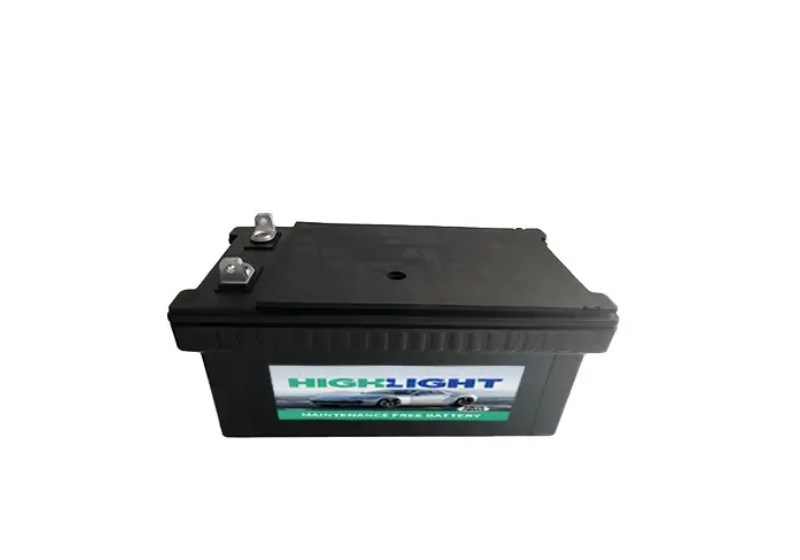Email format error
Email cannot be empty
Email already exists
6-20 characters(letters plus numbers only)
The password is inconsistent
Email format error
Email cannot be empty
Email does not exist
6-20 characters(letters plus numbers only)
The password is inconsistent

News

Maintenance Free Battery - A Buyer's Guide From The Experts
When it comes to powering vehicles, equipment, or backup systems, the reliability and convenience of a maintenance-free battery can make all the difference. These batteries are designed to require little to no upkeep, offering a hassle-free solution for consumers and businesses alike. However, choosing the right maintenance-free battery involves understanding various factors, such as battery types, features, applications, and longevity. This comprehensive guide will provide expert insights to help you make an informed decision when purchasing a maintenance-free battery.
1. What is a Maintenance-Free Battery?
A maintenance-free battery is a type of lead-acid or lithium battery that doesn’t require regular fluid refills or frequent inspections. These batteries are sealed and come with features that help reduce or eliminate the need for conventional maintenance tasks, such as adding water or checking the electrolyte levels. Most maintenance-free batteries are designed to last longer and are safer to use, making them an excellent choice for a variety of applications.
Maintenance-free batteries are typically sealed, preventing the escape of gases and liquids. They are built with advanced materials and technologies that make them more reliable, efficient, and durable, even under demanding conditions.
6-QW-200A N200 200Ah Maintenance Free Battery
2. Types of Maintenance-Free Batteries
Maintenance-free batteries come in various types, and the choice of battery will depend on your needs and the specific application. The most common types include:
- AGM (Absorbent Glass Mat) Batteries: AGM batteries are a type of lead-acid battery in which the electrolyte is absorbed into a fiberglass mat. These batteries are sealed, spill-proof, and provide excellent power performance. They are commonly used in vehicles, motorcycles, and backup power systems.
- Gel Batteries: Gel batteries use a silica-based gel electrolyte instead of liquid acid, making them completely sealed and resistant to spills. These batteries are particularly useful in deep cycle applications, such as in solar power systems, marine vehicles, and RVs.
- Lithium Batteries: Lithium maintenance-free batteries are lightweight, long-lasting, and energy-efficient. They offer fast charging, high power output, and can handle more charge-discharge cycles compared to lead-acid batteries. Lithium batteries are becoming increasingly popular in electric vehicles (EVs) and renewable energy storage systems.
- Sealed Lead-Acid (SLA) Batteries: SLA batteries are a type of lead-acid battery that is sealed and does not require the addition of water or electrolyte monitoring. They are commonly used in applications such as UPS (Uninterruptible Power Supply), security systems, and mobility scooters.
Each type of maintenance-free battery offers unique benefits. For instance, AGM batteries are great for high-drain applications, while gel batteries are better for deep cycling. Lithium batteries, though more expensive, offer superior performance and longevity.
3. Factors to Consider When Buying a Maintenance-Free Battery
Choosing the right maintenance-free battery for your needs involves evaluating several key factors. These include:
- Application: The first step is to determine what the battery will be used for. Are you using it for a vehicle, a solar energy system, a backup power unit, or something else? Different applications require different battery characteristics, such as capacity, power output, and size.
- Capacity and Power Output: Battery capacity is measured in amp-hours (Ah) and determines how much energy the battery can store. For example, a higher capacity is needed for vehicles or large-scale backup systems. The power output, often measured in volts (V), should match the requirements of your equipment or vehicle.
- Lifespan and Cycle Life: The lifespan of a maintenance-free battery is an essential consideration. Look for a battery with a long cycle life, which refers to how many charge-discharge cycles the battery can undergo before its performance begins to degrade. Lithium batteries generally last longer and offer more cycles compared to traditional lead-acid options.
- Size and Fit: Ensure that the battery fits your system or vehicle. The size and weight of the battery should match the designated space, especially for vehicles and backup systems. Batteries that are too large or too small can result in inefficiency or operational problems.
- Charging Time: Fast-charging batteries are especially important for high-demand applications, such as electric vehicles and backup power systems. While lead-acid batteries take longer to charge, lithium batteries generally offer quicker charge times.
- Environmental Conditions: Some maintenance-free batteries are designed for use in extreme temperatures or harsh environments. If you plan to use the battery in an outdoor environment or in areas with high temperature fluctuations, look for batteries designed with these conditions in mind.
By considering these factors, you can ensure that the maintenance-free battery you choose aligns with your specific needs, ensuring optimal performance and longevity.
4. Benefits of Maintenance-Free Batteries
Maintenance-free batteries offer numerous advantages over traditional flooded lead-acid batteries. Here are some of the key benefits:
- No Need for Regular Maintenance: The most obvious benefit of a maintenance-free battery is that it doesn’t require periodic checks or water refills. This makes them more convenient and saves time and effort in maintaining the battery.
- Higher Efficiency: Maintenance-free batteries are typically more efficient because they are designed with advanced technology that minimizes energy loss during charging and discharging. This leads to better overall performance and reduced operating costs.
- Longer Lifespan: Many maintenance-free batteries, especially lithium and AGM batteries, offer a longer lifespan than traditional lead-acid batteries. This reduces the frequency of replacements, providing better value in the long term.
- Improved Safety: Sealed designs prevent the leakage of dangerous chemicals or acid, reducing the risk of spills or corrosion. This makes maintenance-free batteries safer to handle, especially in applications where exposure to hazardous materials is a concern.
- Compact and Space-Saving: Many maintenance-free batteries are designed to be compact and lightweight, offering space-saving solutions for applications with limited space, such as small vehicles or backup power units.
- Environmentally Friendly: Maintenance-free batteries, especially lithium batteries, are often designed to be more environmentally friendly. They can be recycled more efficiently than flooded batteries, and many manufacturers are working to improve their eco-friendliness in production and disposal.
The numerous benefits of maintenance-free batteries make them an attractive choice for anyone looking to reduce the hassle of maintenance and improve the efficiency of their power systems.
5. Common Applications of Maintenance-Free Batteries
Maintenance-free batteries are used in a wide range of applications. Some of the most common uses include:
- Automotive: Maintenance-free batteries are commonly used in cars, trucks, and motorcycles. AGM and lithium batteries are popular choices due to their ability to withstand extreme temperatures and provide reliable power in demanding conditions.
- Solar Energy Systems: Maintenance-free batteries, particularly gel and lithium batteries, are often used for storing energy in solar power systems. These batteries provide reliable storage for off-grid solar setups or backup systems in residential and commercial buildings.
- Uninterruptible Power Supply (UPS): UPS systems rely on maintenance-free batteries, such as SLA and AGM, to provide emergency power during outages. These batteries ensure that critical systems, like data centers, hospitals, and telecommunications, remain operational during power disruptions.
- Electric Vehicles (EVs): Lithium maintenance-free batteries are the preferred choice for electric vehicles due to their high energy density, fast charging, and long lifespan. These batteries enable electric cars, trucks, and bikes to run efficiently and reliably.
- Marine Applications: Maintenance-free batteries are used in boats and other marine vessels to power electronics, engines, and lighting. Their ability to resist corrosion and handle deep cycling makes them ideal for marine environments.
- Backup and Emergency Power: Maintenance-free batteries are used in various backup power systems, from home generators to industrial backup units. They provide peace of mind by ensuring that essential equipment continues running during power failures.
The versatility of maintenance-free batteries makes them suitable for applications across many industries, from transportation to renewable energy and backup power.
6. Frequently Asked Questions (FAQs)
1. How long do maintenance-free batteries last?
The lifespan of a maintenance-free battery depends on the type of battery, usage, and environmental conditions. AGM and lithium batteries generally last between 3 to 10 years, while gel batteries may last up to 12 years with proper care.
2. Can I charge a maintenance-free battery in any charger?
No, it’s essential to use a charger that is compatible with your specific type of maintenance-free battery. Using the wrong charger can damage the battery or reduce its lifespan.

